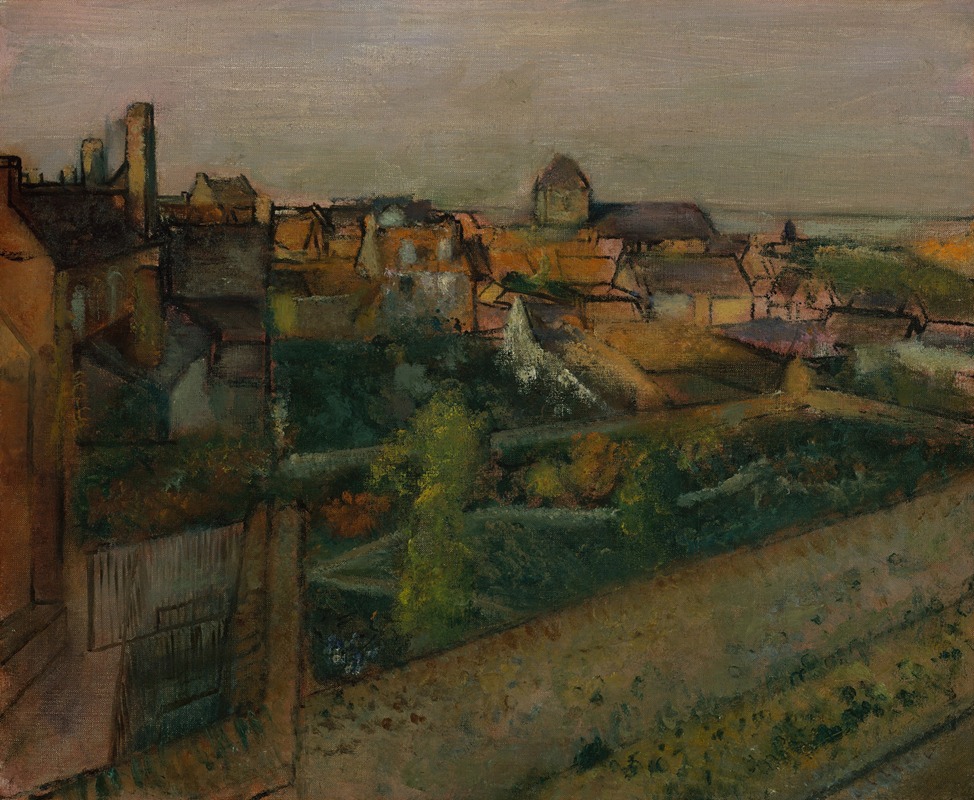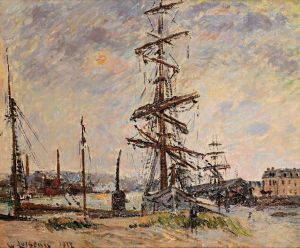
View of Saint-Valéry-sur-Somme
A hand-painted replica of Edgar Degas’s masterpiece View of Saint-Valéry-sur-Somme, meticulously crafted by professional artists to capture the true essence of the original. Each piece is created with museum-quality canvas and rare mineral pigments, carefully painted by experienced artists with delicate brushstrokes and rich, layered colors to perfectly recreate the texture of the original artwork. Unlike machine-printed reproductions, this hand-painted version brings the painting to life, infused with the artist’s emotions and skill in every stroke. Whether for personal collection or home decoration, it instantly elevates the artistic atmosphere of any space.
"View of Saint-Valéry-sur-Somme" is a painting by the renowned French artist Edgar Degas. Created in 1896, this work is a notable example of Degas's landscape painting, a genre he explored less frequently compared to his more famous depictions of dancers and everyday Parisian life. The painting captures a scenic view of Saint-Valéry-sur-Somme, a commune in the Somme department in northern France, known for its picturesque landscapes and historical significance.
Edgar Degas (1834-1917) was a prominent figure in the Impressionist movement, although he preferred to be associated with Realism. His works are celebrated for their meticulous attention to detail, innovative compositions, and exploration of movement and light. While Degas is best known for his ballet dancers, horse races, and portraits, his landscapes, though fewer in number, offer a glimpse into his versatility and keen observational skills.
"View of Saint-Valéry-sur-Somme" showcases Degas's ability to capture the essence of a place with a delicate balance of color and form. The painting depicts a serene view of the town, with its characteristic architecture and natural surroundings. The composition is marked by a harmonious blend of natural elements and human habitation, reflecting Degas's interest in the interplay between nature and human activity.
The town of Saint-Valéry-sur-Somme itself has a rich history, dating back to the medieval period. It is situated on the estuary of the River Somme, providing a strategic and picturesque location that has attracted artists and visitors for centuries. Degas's choice of this location for his landscape painting indicates his appreciation for its aesthetic and historical value.
In this painting, Degas employs a muted color palette, with soft blues, greens, and earthy tones dominating the scene. The brushwork is delicate and precise, capturing the subtle variations in light and shadow that define the landscape. The overall effect is one of tranquility and timelessness, inviting the viewer to contemplate the beauty of the natural world and the quiet charm of the town.
"View of Saint-Valéry-sur-Somme" is part of the collection at the Musée d'Orsay in Paris, which houses one of the most extensive collections of Impressionist and Post-Impressionist masterpieces. The museum's acquisition of this work underscores its significance within Degas's oeuvre and its contribution to the broader narrative of 19th-century French art.
Degas's landscapes, including "View of Saint-Valéry-sur-Somme," are less well-known than his other works but are equally important in understanding his artistic development and the breadth of his interests. These paintings reveal a different facet of his talent, one that is deeply connected to the natural world and the quiet beauty of rural and coastal France.
In summary, "View of Saint-Valéry-sur-Somme" by Edgar Degas is a testament to the artist's skill in capturing the serene beauty of a historical French town. Through his delicate brushwork and thoughtful composition, Degas offers viewers a glimpse into the tranquil landscapes that inspired him, enriching our understanding of his diverse artistic legacy.


















